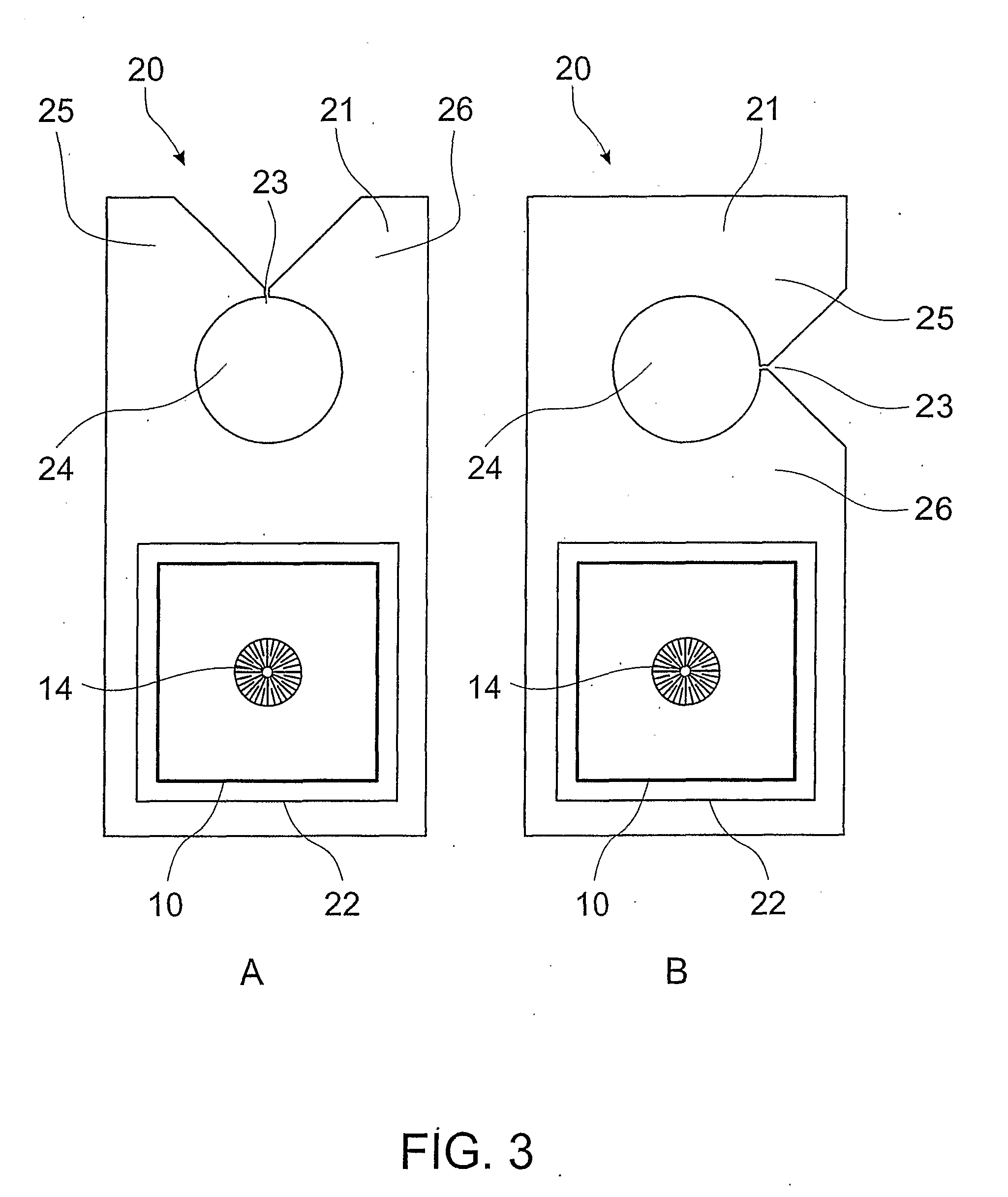Dispenser
a dispenser and dispenser technology, applied in the field of dispensers, can solve the problems of insufficient design of dispensers, inability to meet the needs of users, and inability to meet the needs of users, and achieve the effect of prolonging the field life or the operational longevity of volatile materials
- Summary
- Abstract
- Description
- Claims
- Application Information
AI Technical Summary
Benefits of technology
Problems solved by technology
Method used
Image
Examples
example 1
[0129] The dispenser of the current invention is useful for controlling insect pests of agriculture and horticulture, for example, the Oriental fruit moth Grapholita molesta, in peaches and stone fruit. 250 milligrams of the sex pheromone (a mixture of Z,8 Dodecen-1-yl acetate, E,8 Dodecen-1-yl acetate, Z,8 Dodecen-1-yl alcohol in a 93:6:1 ratio by weight) may be inserted into each dispenser.
[0130] 500 dispensers per hectare are applied to the field or orchard before commencement of moth flight in spring.
example 2
[0131] Control of Codling moth, Cydia pomonella in apples and pears
[0132] 100 milligrams of the sex pheromone E,E 8,10 Dodecadien-1-yl alcohol is inserted into each dispenser. 1000 dispensers per hectare are applied to the field or orchard before commencement of moth flight in spring.
example 3
Control of aphids, including the Rose aphid, Macrosiphuin rosae
[0133] 100 milligrams of the sex pheromone E,E 8,10 Dodecadien-1-yl alcohol is inserted into each dispenser. 1000 dispensers per hectare are applied to the field or orchard before commencement of moth flight in spring
[0134] E, beta-farnesene, the alarm pheromone of many aphid species together with the plant kairomones methyl salicylate, methyl jasmonate and Z,3 Hexen-1-yl acetate may be inserted into dispensers.
[0135] Tea tree oil inserted into dispensers can be used for the control of ant pests such as the Red Imported Fire ant, Solenopsis invicta.
PUM
 Login to View More
Login to View More Abstract
Description
Claims
Application Information
 Login to View More
Login to View More - R&D
- Intellectual Property
- Life Sciences
- Materials
- Tech Scout
- Unparalleled Data Quality
- Higher Quality Content
- 60% Fewer Hallucinations
Browse by: Latest US Patents, China's latest patents, Technical Efficacy Thesaurus, Application Domain, Technology Topic, Popular Technical Reports.
© 2025 PatSnap. All rights reserved.Legal|Privacy policy|Modern Slavery Act Transparency Statement|Sitemap|About US| Contact US: help@patsnap.com



